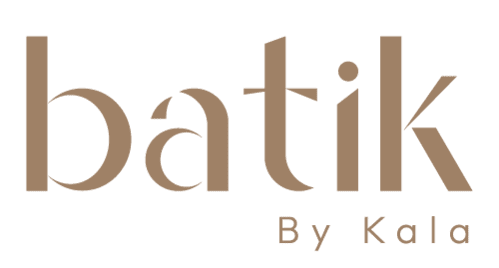Can traditional art influence modern style while preserving cultural roots? Malaysia’s vibrant textile heritage offers a surprising answer. Recognized by UNESCO, this intricate craft blends indigenous, Chinese, and Indian influences into every hand-dyed design.
Today, brands like Batik Boutique prove that heritage and innovation can coexist. Their B Corp-certified approach supports local artisans while meeting global demand for sustainable fabric. Even Malaysia’s "Batik Fridays" policy highlights its enduring role in national identity.
From royal courts to runway trends, this cultural heritage continues to evolve. Discover how age-old techniques inspire contemporary creations—and why the world is taking notice.
The Rich Heritage of Malaysian Batik
Floral motifs and bold hues define a craft shaped by centuries of cultural exchange. This art form blends Islamic aesthetics with indigenous techniques, creating patterns as vibrant as Malaysia’s multicultural tapestry.
Historical Roots and Cultural Influences
Dating to 15th-century Terengganu, early designs drew inspiration from Indian patola textiles. Islamic principles favored geometric and botanical themes, avoiding human figures. By the 1970s, MARA Institute formalized training, preserving methods while adapting to modern tastes.
Symbolism in Traditional Motifs
Every curve and color carries meaning. Below are key motifs and their hidden messages:
|
Motif |
Meaning |
Cultural Link |
|
Hibiscus |
National unity |
Malaysia’s national flower |
|
Bamboo |
Resilience |
Endurance in adversity |
|
Ocean waves |
Maritime heritage |
Coastal trade history |
Batik's Role in Malaysian Identity
Post-independence, this cultural heritage became a nation-building tool. Datin Seri Endon Mahmood’s 1990s revival campaigns and government quality certifications elevated its status. Today, it symbolizes unity—worn proudly from offices to global diplomacy.
Traditional Techniques Behind Malaysian Batik
Mastering Malaysian textile art requires precision in wax application and dye mastery. Each piece reflects hours of labor, blending heritage with chemical innovation. Below, we break down the methods that keep this craft alive.
The Wax-Resist Dyeing Process
Artisans follow a meticulous 5-step process to create vibrant designs. First, they sketch patterns using canting tools. Next, hot wax is applied to preserve white areas before dye baths add color.
|
Step |
Action |
Key Detail |
|
1 |
Design |
Canting tools outline motifs |
|
2 |
Wax Application |
Beeswax-paraffin mix for crackle effects |
|
3 |
Dye Baths |
Fiber-reactive chemicals since 1980s |
|
4 |
Wax Removal |
Boiling water washes away wax |
|
5 |
Finishing |
Quality checks for colorfastness |
Hand-Drawn vs. Block-Printed Batik
Hand-drawn batik tulis takes weeks, with artisans using tjanting needles for delicate lines. In contrast, block-printed batik cap uses copper stamps, producing 20 meters daily. The former commands premium prices for its artistry.
Materials and Tools Used
Silk remains favored for luxury pieces, though cotton dominates mass production. Puan Maimunah’s Terengganu workshop still uses mengkudu root for earthy hues, but most artisans switched to chemical dyes for brighter colors.
Explore more about these traditional techniques and their evolution in Malaysia’s textile industry.
Batik's Significance in Modern Malaysian Fashion
Luxury brands and local designers are reinventing a centuries-old craft for today’s closets. From Christian Louboutin’s limited-edition collection to Jimmy Choo’s heels for Bonia, global names celebrate its versatility. Meanwhile, e-commerce platforms like Zalora report a 40% surge in casualwear sales featuring refreshed motifs.
Contemporary Designs and Trends
Digital printing now enables micro-patterns, allowing brands like Pestle & Mortar to blend tradition with streetwear. Their batik-printed hoodies resonate with Gen Z, while Rizalman’s Paris Fashion Week gowns prove its haute-couture potential. Key trends include:
- Bold color-blocking: Neon dyes paired with classic motifs
- Hybrid fabrics: Silk-cotton blends for breathable formalwear
- Architectural integration: KLCC’s lobby panels feature laser-cut patterns
Batik in High Fashion and Streetwear
Celebrity influence amplifies demand—Neelofa’s hijab line, Naelofar, sold out in hours. Malaysia Airlines’ uniform redesign with Carven Ong merges professionalism with heritage. Even architects incorporate art into skyscrapers like TRX, proving its cross-industry appeal.
Government and Designer Collaborations
MITRA grants empower emerging talents, while Kraftangan Malaysia’s design competition sparks innovation. Since 2015, KL Fashion Week’s dedicated runway has turned heads globally. These efforts ensure the craft evolves without losing its soul.
Conclusion
From royal courts to tech-infused textiles, this craft continues to redefine itself. Contributing RM 3.2 billion annually, it supports over 15,000 artisans, blending tradition with modern production methods.
Brands like Karyaneka lead the way, merging handcrafted techniques with innovations like wearable tech. Museums, including Muzium Tekstil, now conserve rare designs, ensuring this cultural heritage endures.
For those valuing authenticity, seek MSC-certified pieces. As designers push boundaries, one truth remains: adaptability keeps traditions alive without losing their soul.
FAQ
What makes Malaysian batik unique compared to other styles?
Malaysian batik stands out with its vibrant colors, floral motifs, and free-form designs. Unlike Javanese batik, which often features intricate geometric patterns, this art form embraces bold, nature-inspired themes.
How is traditional batik fabric made?
Artisans use a wax-resist dyeing method. Hot wax is applied to cloth using a canting (a small tool) or block stamps. The fabric is then dyed, and the wax is removed to reveal intricate patterns.
Can batik be worn in modern fashion?
Absolutely! Designers like Bernard Chandran and Melinda Looi incorporate batik into contemporary outfits, from tailored suits to casual dresses. Its versatility makes it a staple in both high fashion and streetwear.
What role does batik play in Malaysia’s cultural identity?
It symbolizes national pride and craftsmanship. Recognized as part of UNESCO’s intangible heritage, it reflects Malaysia’s multicultural influences, blending Malay, Chinese, and Indian artistic traditions.
Are there efforts to preserve this craft?
Yes. The Malaysian government supports batik through festivals, grants, and collaborations with designers. Schools and workshops also teach younger generations to keep the tradition alive.
